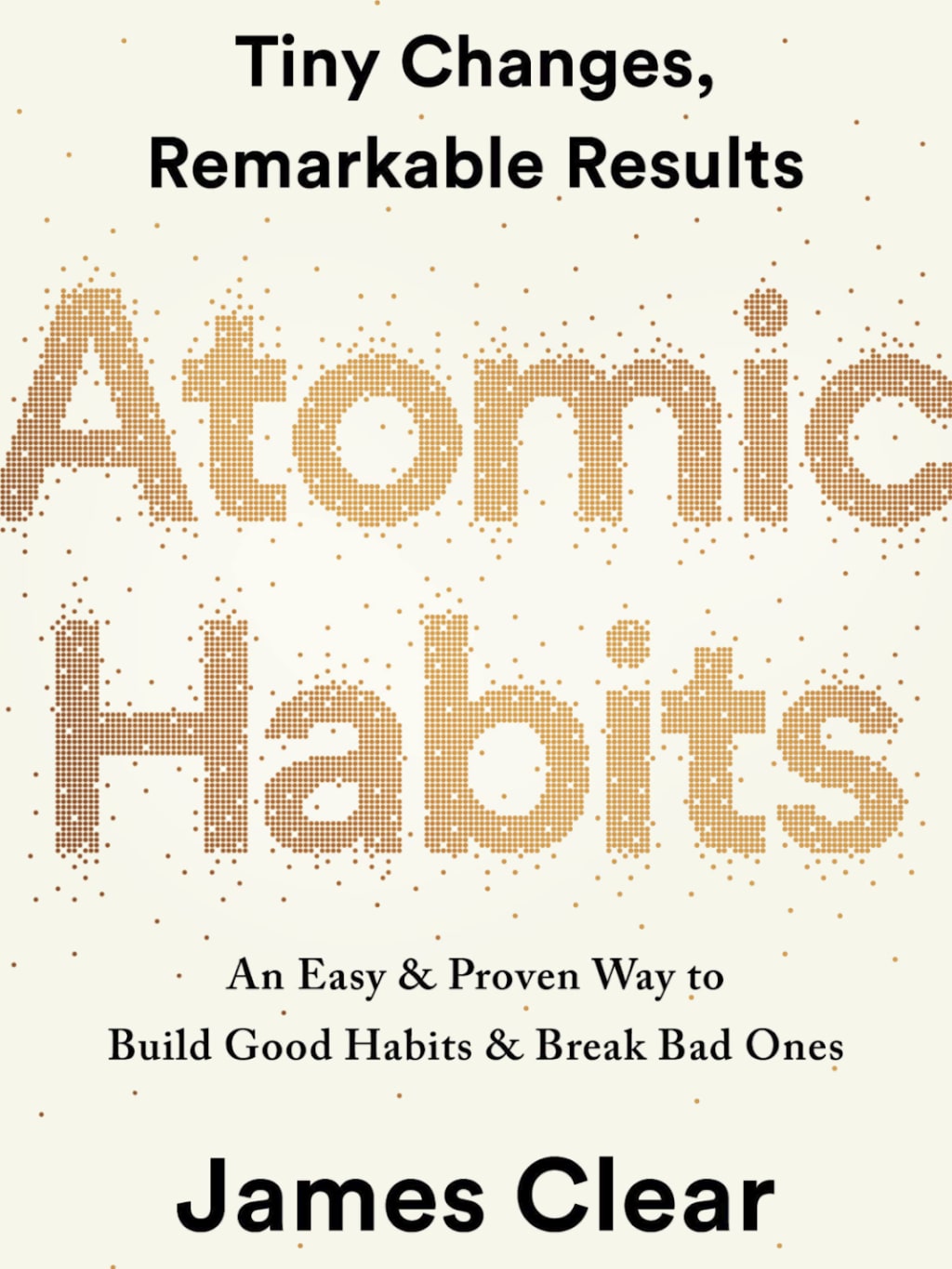Content warning
This story may contain sensitive material or discuss topics that some readers may find distressing. Reader discretion is advised. The views and opinions expressed in this story are those of the author and do not necessarily reflect the official policy or position of Vocal.
Summary of “Atomic Habits: An Easy & Proven Way to Build Good Habits & Break Bad”
An Easy & Proven Way to Build Good Habits & Break Bad”

Introduction
In the book “Atomic Habits: An Easy & Proven Way to Build Good Habits & Break Bad,” author James Clear provides a practical guide to transforming our lives by harnessing the power of small habits. Clear argues that making tiny changes in our daily routines can have a profound impact on our long-term success and happiness. This article aims to summarize the key concepts discussed in the book and provide valuable insights into building effective habits.
Click here to Listen now to this audiobook for free
The Power of Atomic Habits
Atomic habits are small actions that compound over time to produce remarkable results. Clearly introduces the concept of the “Plateau of Latent Potential,” where significant changes occur beneath the surface before they become visible. By focusing on small, incremental improvements, we can tap into the power of atomic habits and unlock our true potential.
The Four Laws of Behavior Change
Clear outlines four laws that shape our behavior and enable us to build good habits while breaking bad ones.
3.1 The 1st Law: Make It Obvious
To create a new habit, we must make it obvious by increasing its visibility and reducing friction. Clear suggests implementing habit cues, such as visual reminders and habit tracking, to enhance awareness and motivation.
3.2 The 2nd Law: Make It Attractive
Habits are more likely to stick if they are appealing. Clear explains how to make habits attractive by associating them with positive emotions, creating a sense of anticipation, and designing a rewarding environment.
3.3 The 3rd Law: Make It Easy
Simplicity is key to habit formation. Clear emphasizes the importance of making habits easy to adopt by breaking them down into manageable steps, reducing the activation energy required, and optimizing the environment for success.
3.4 The 4th Law: Make It Satisfying
Habits need to be rewarding to reinforce their continuation. Clear suggests various strategies, such as habit tracking, celebrating small wins, and designing immediate rewards, to make habits satisfying and increase their stickiness.
The Role of Identity in Habit Formation
Clear emphasizes the significance of identity in habit formation. By adopting new habits that align with our desired identity, we can create a positive feedback loop where our behaviors reinforce our self-image, leading to further habit reinforcement and personal growth.
The Importance of Habit Stacking
Habit stacking involves linking a new habit to an existing one, capitalizing on our existing routines to facilitate habit formation. Clear provides practical guidance on how to implement habit stacking effectively and maximize its impact on behavior change.
How to Overcome Plateaus and Stay on Track
During the habit-building journey, plateaus and setbacks are inevitable. Clear discusses strategies to overcome plateaus, such as focusing on the process rather than the outcome, embracing boredom and discomfort, and employing deliberate practice to push through limitations.
The Impact of Environment on Habits
Our environment plays a crucial role in shaping our habits. Clear explains how we can optimize our environment to support positive habits and eliminate triggers that lead to undesirable behaviors. By making small changes to our physical and social surroundings, we can create an environment that encourages the development of good habits.
The Two-Minute Rule and Habit Building
The two-minute rule suggests starting habits with actions that take less than two minutes to complete. Clear explains the psychology behind this rule and how it can be a catalyst for habit formation. By reducing the barrier to entry, we increase the likelihood of performing the habit consistently.
The Power of Habits in Achieving Long-Term Goals
Clear emphasizes that habits are the compound interest of self-improvement. By focusing on the process and embracing the power of small, consistent actions, we can make significant progress toward our long-term goals. Habits act as the building blocks of success and enable us to sustain progress over time.
Conclusion
“Atomic Habits: An Easy & Proven Way to Build Good Habits & Break Bad” provides practical strategies and insights into harnessing the power of small habits for personal transformation. By following the principles outlined in the book, individuals can create positive behavioral changes and unlock their full potential.
Click here to Listen now to this audiobook for free
FAQs
11.1 Can I build multiple habits at once?
Yes, it is possible to build multiple habits simultaneously. However, it is essential to prioritize and focus on a few habits at a time to ensure better success. Trying to tackle too many habits at once can be overwhelming and decrease the likelihood of long-term adherence.
11.2 How long does it take to form a new habit?
The time required to form a new habit can vary depending on several factors, including the complexity of the habit and individual differences. Research suggests that it takes an average of 66 days for a new behavior to become automatic. However, it is important to note that habit formation is a gradual process, and consistency is key.
11.3 What should I do if I miss a day of habit tracking?
If you miss a day of habit tracking, don’t let it discourage you. Instead, focus on getting back on track as soon as possible. Consistency is more important than perfection. Consider it a minor setback and use it as an opportunity to recommit to your habits.
11.4 How can I make my habits more attractive?
To make your habits more attractive, you can try various strategies. For example, you can associate your habits with enjoyable activities, create a visually appealing habit environment, or find ways to make the habit more enjoyable by adding a social element or incorporating rewards.
11.5 Can I use atomic habits to break bad habits?
Absolutely! The principles of atomic habits can be applied to breaking bad habits as well. By understanding the underlying mechanisms of habit formation and utilizing strategies like habit stacking, making it unattractive, and replacing bad habits with positive alternatives, you can effectively break unwanted behaviors and replace them with healthier habits.
Click here to Listen now to this audiobook for free
Disclosure: Some external links in the post are affiliate links
About the Creator
Rachelle Anna
I consider myself a creative writer, and my approach to writing is distinct and imaginative. The way I hold the pen is unlike anything you've witnessed before. As for the content I produce, its quality is yet to be determined.
Enjoyed the story? Support the Creator.
Subscribe for free to receive all their stories in your feed. You could also pledge your support or give them a one-off tip, letting them know you appreciate their work.






Comments
There are no comments for this story
Be the first to respond and start the conversation.